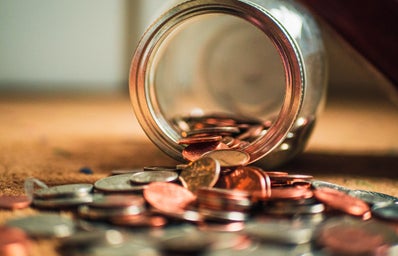Yes, it’s true. Sure, I spent all of January drowning in all my nickels and dimes, meticulously tracking money spent and thriving in money saved. Sure, my money spending starvation did not involve my favorite snacks or an expensive night out, but I was not money hungry. Want to learn how you can embark on a money transformation? Keep reading.
What is a no-spend challenge?
Essentially, a no-spend challenge is a dedicated period of time where you only buy the absolute essentials (think groceries, rent, insurance, gas). A typical no-spend challenge has an end goal, either to save money, analyze spending habits, pay down debt, or break addiction to spending. Features of a no-spend challenge include no eating out, buying snacks/treats on the go, casual shopping, or unplanned purchases. Of course, depending on your goals, you can tailor your no-spend challenge to your preferences.
What you need:
A way to track your spending- I suggest a budgeting app, like EveryDollar, but a simple notebook can also work
A notebook to record all of your wants during the month
Commitment to successfully accomplishing the challenge, but the self-love to accept failure along the way
How to Get Started
-
Write down a duration of time you’d like to start and end your no-spend challenge
-
Underneath your time, remark why you are doing a no-spend challenge
-
Then, list a set of rules for yourself. Write down what are necessities that need to be bought regardless of your challenge. Alongside that list, write down what you aren’t buying (restaurant food, shoes, makeup, Starbucks, etc). If you don’t like hard-nos, or still need some of your non-necessities, consider writing a dollar limit of how much you are going to spend on that item
-
Spend the rest of the challenge not spending money. When you do spend money, track down what you paid for the item alongside what the item is
-
If you find yourself desiring an item that is against your rules, write the item down
-
At the end of the month, look at what you spent and what you wanted. Take this data with what you will.
Tips for Success
Track everything (and I mean everything). I got a gumball at the mall, and I put that quarter on the list
Don’t go online browsing. You will just feel anxious to spend
Get creative. A no-spend challenge does not have to be boring. Look for free or low-cost events. Most of the time, you will have to move out of your comfort zone, but you will also meet new people and try new things. I mean, come on, you’re a U student for crying out loud! There’s so much free food, free lectures, free parties, free performances out there. Just do a little research– follow the UPC on Facebook, the Marriott Library on Instagram, or read the U of U weekly newsletter in your mailbox that you haven’t opened since Freshman year.
Plan ahead. Majority of unplanned college expenses (besides the necessities, tution, and books) come from lack of planning. I will also add that majority of unplanned expenses come from buying food. What’s the solution? Pack your lunch. Pack extra snacks. Learn how to keep a well-stocked pantry and how to make simple meals. Knowing how to make your own food and feed yourself is pivotal to both saving money and being a grown adult.
Don’t choose a bad time. Want to do a no-spend challenge during December? I would urge you to reconsider. Always set a no-spend challenge during a time where you won’t be vacationing and there aren’t any major celebrations, anniversaries, holidays, or birthdays.
My Personal Experience
Yes, I embarked on a no-spend January. I used this month primarily to save money for my Alternative Break in March and a trip to the Grand Canyon in May. Though I thought I would miraculously gain money mantras, I found out that this challenge is harder than it appears on paper. But have no fear, I was successful during my challenge.
Granted, this month was the beginning of the semester, so I spent about $60 buying or renting textbooks, notebooks, and some more pens. Luckily, I had already saved well over that amount during the summer to pay for my books and school materials. But, regardless of my ample savings, I did attempt to spend less. Instead of buying a new copy of a literature book on Amazon that was $20, I bought a used copy for $6. I rented a later edition of my Human Development textbook, and opted to find the online version of my statistics textbook. I was lucky enough to have a cheap semester in terms of materials, but I still saved well over $70 regardless.
I am a junk food junkie and ever since I began college, I have had an obsession with vending machines. I’m not sure where my attraction to 3-month old Lays Chips and stale gum inside of an giant metal monster comes from, but I have an attraction anyway. Usually, I buy an item from a machine three times a week, which is about $12 spent on fake cheese and refined sugar a month. Though $12 is not a lot, I can now use that cash to save for my trips.
My spending habits are also affected by my boyfriend and I’s routine of going on a lot of dates. Since he is the one who makes a steady income, he typically is in charge of paying for dates, but I wanted to change that. We agreed we both had plans that needed more saving, and planning free or low cost dates would help both of us. Majority of our dates are centered around buying food, so instead of buying, I made us sushi, cookies, curry, and pasta at various times of January. We then did free and fun dates, like exploring the Utah Museum of Contemporary Art, building a pillow fort and watching a movie, a photoshoot with my sister, and attending Crimson Cosmos.
I did fail a few times. First, I was sick, and out of my sick brain logic I assumed that because I was sick, I deserved a $10 trip to Mom’s Cafe to buy candy and snacks. Second, I was unprepared, and bought a $2 pack of hair ties from Forever 21 because I needed one. And third, and dumbest of all, I dropped my phone the day I had put a new screen protector on and shattered the entire glass protector. I then ordered the same one off Amazon for $20.
But overall, I found out a lot of my wants (hedgehog candles, a rose teddy bear, a new blanket, etc) were either necessary or just random urges. I am now more aware my boredom shopping, or in other words, I like to buy useless stuff on Amazon because no one has talked to me all day. I hope that you learn more about yourself during your no-spend journey, and remember, the purpose is to learn, not get an A+.



